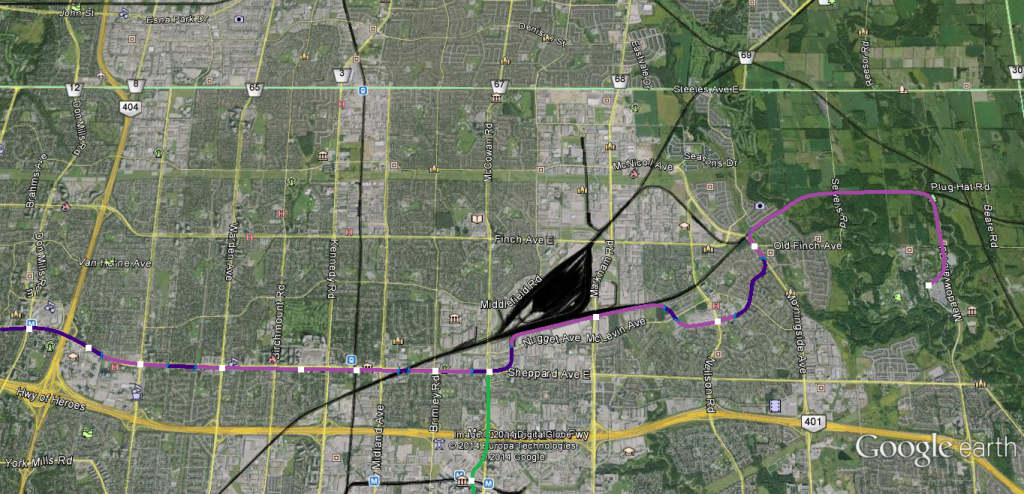It's pretty clear that a subway on Sheppard was a mistake. As I recall, at the time there were competing proposals for what transit project to build. A lot of the impetus came from Mel Lastman, who seemed to want his personal political legacy to be that he 'won' over competing boroughs and their mayors. Never mind what would be best for the city as a whole....
The issue for today, though, is how to put the toothpaste back in the tube. We ought to be looking at building *corridors* that link parts of the city, rather than being guided by current or future passenger counts over shorter route segments There is still an opportunity to build a *corridor* along Sheppard, but it needs a view of the whole system and not just what a particular Scarboro Councillor wants in their ward.
Leaving the subway as is and building LRT around it is a poor solution. People will not board a LRT in Scarboro, transfer to a subway, transfer to another LRT, and then transfer back to a subway. Those suggesting this approach is a "minor" inconvenience to riders are wrong....Each change is two minutes of walking and five to ten minutes of waiting for the connection. AND giving up one's seat and vying for a seat, or at least a sufficient amount of personal standee space, all over again. I would rather see us just build a replacement surface LRT, and seal up the subway....or rent it out as a solar powered hydroponic garden space

Extending the subway at least westwards to the Spadina line will give a seamless ride across town. The "build it and people will find a use for it" does have potential. It is unquestionably the most expensive, but it is the best shot at a good passenger experience for a ride across town. Ditto if the east terminal is moved east of the DVP. That creates the greatest potential for development ideas to come forward. Again, future development rather than today's passenger counts is what matters.
If the issue is that the subway can't be converted to LRT *in places*, then we need to know how much it would cost to shut the subway down for a year and dig up and change those places. That can't be cheap either....but if it's even marginally cheaper than more subway, then it's better than sticking with subway. Then we would have a useful longer LRT that runs cross town. (Cross-town...gee, that would be a cool brand name for an LRT...wonder if anyone has thought of that already....)
- Paul
- Paul






